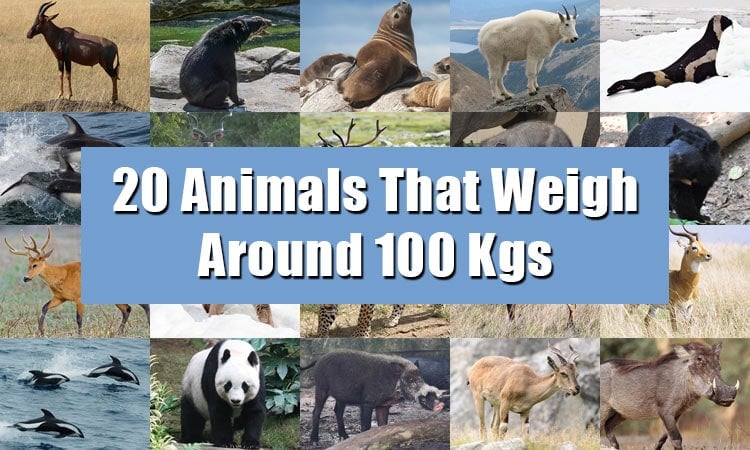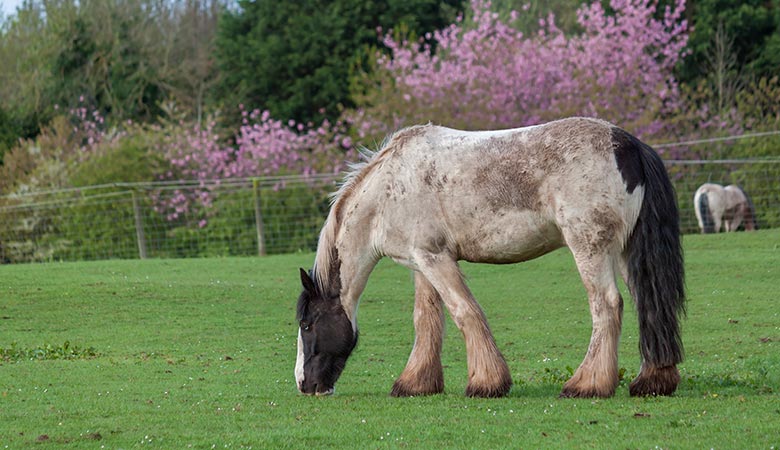Animals are fascinating in all their majesty, from the creatures of the ocean to our land-dwelling friends, to the birds of the sky.
This planet is filled with so many amazing animals, but birds have been a point of fascination and research for many generations. Especially eagles. Being one of the more majestic birds of prey, eagles not only look amazing, but their behaviors and unique qualities have had the attention of ornithologists for so many reasons.
What are the 10 heaviest eagles in the world?
- Steller’s Sea Eagle (Haliaeetus pelagicus)
- Philippine Eagle (Pithecophaga jefferyi)
- Harpy Eagle (Harpia harpyja)
- White-Tailed Eagle (Haliaeetus albicilla)
- Martial Eagle (Polemaetus bellicosus)
- Wedge-Tailed Eagle (Aquila audax)
- Crowned Eagle (Stephanoaetus coronatus)
- Golden Eagle (Aquila chrysaetos)
- Bald Eagle (Haliaeetus leucocephalus)
- Haast’s Eagle (Hieraaetus moorei)
There are various species of eagles that live or have lived on the planet. They happen to be one of the larger birds of prey, so the interest in studying them isn’t a surprise. Since they hunt for food in such a way that is amazing to watch, along with their other living behaviors, plenty of people find them fun to watch. And the bigger the bird, the more fascinating they are to look at. Let’s take a look at the 10 eagles that made our list for the heaviest in the world:
1. Steller’s Sea Eagle (Haliaeetus pelagicus)
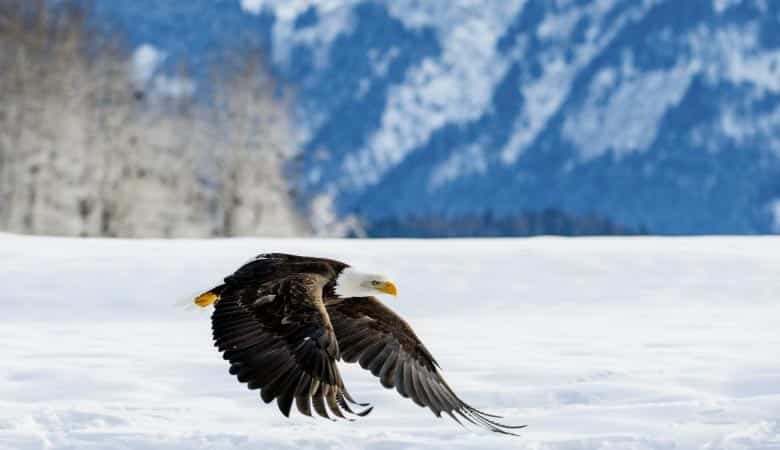
Average weight: 11 to 20 pounds
The Steller’s Sea Eagle was first described in 1811 by Peter Simon Pallas. It is, on average, the heaviest eagle in the world. Although it may not be the heaviest eagle to ever exist, it certainly tops the list of eagles that are still in existence today. Weighing-in on average from 11 to 20 pounds, this eagle is large in comparison to other species.
It dwells in coastal Northeastern Asia and will typically prey on fish, as well as water birds. The Steller’s Sea Eagle has also been known to have a large population in far Eastern Russia. Researchers have counted around 4,000 of these birds that live in the region.
2. Philippine Eagle (Pithecophaga jefferyi)
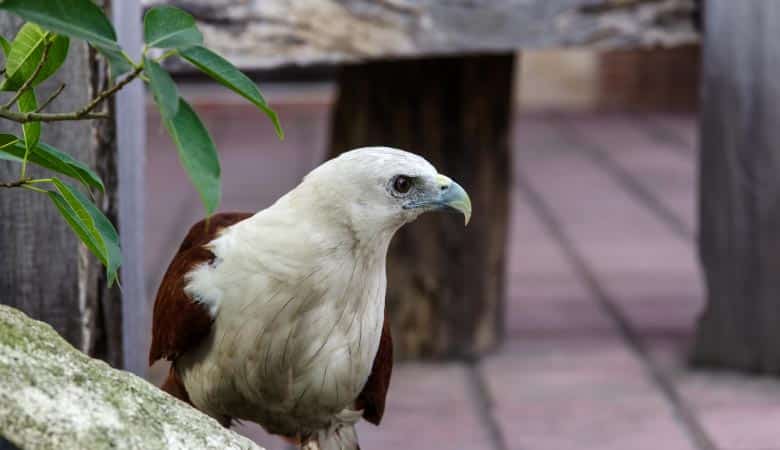
Average weight: 9 to 18 pounds
The Philippine Eagle is a species on our list that resides on the endangered list of animals of the world. So, they have been attempting to preserve the last of these eagles that remain. By giving them an environment to breed without fear of poachers, the species can eventually (hopefully) thrive again.
This species of eagle will range anywhere from 9 to 18 pounds and are also one of the larger birds on our list. In terms of length and wing surface, this eagle is the biggest in size. These birds have dropped in numbers due to loss of habitat by deforestation.
3. Harpy Eagle (Harpia harpyja)
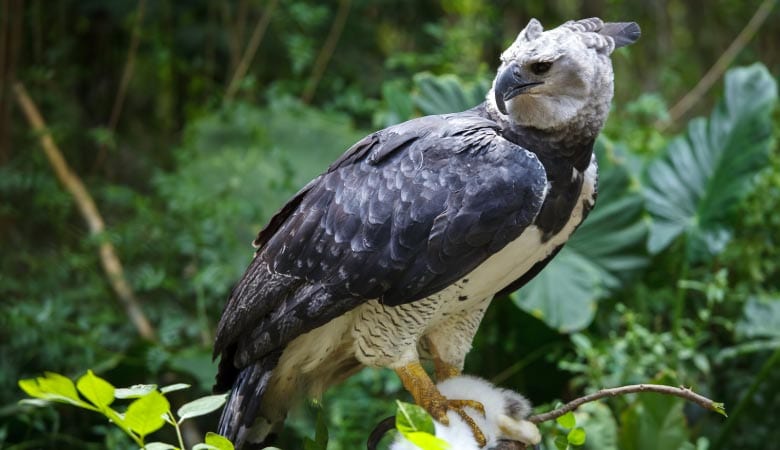
Average weight: 13 to 20 pounds
The Harpy Eagle is considered a neotropical species of eagle, which means it resides in the tropical ecoregions of the Americas, including all of the South American temperate zone. This eagle also goes by the alternate name, the American Harpy Eagle.
The Harpy Eagle was first described by Linnaeus in Systema Naturae in 1758. There was a mythological beast called “Harpy”; thus the Harpy Eagle achieved its name. This eagle weighs in at 13 to 20 pounds. So, it makes the cut for our list of the largest eagles because it’s just as big and majestic as the other birds on our list.
4. White-Tailed Eagle (Haliaeetus albicilla)
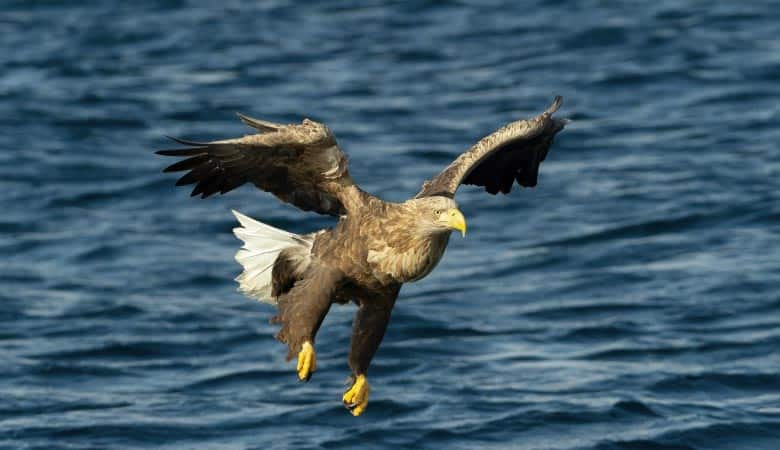
Average weight: 9 to 18 pounds
The White-Tailed Eagle is another large species of eagle that resides in temperate Eurasia. This bird is also considered a sea eagle. The White-Tailed Eagle is usually scarce due to human activities, but they do exist as far west as Greenland and have been seen as far east as Japan.
This bird of prey weighs in at 9 to 18 pounds and was first described by the Swedish naturalist Carl Linnaeus in 1758. There was a time when this eagle was considered endangered, and the worries over its extinction were prevalent. But thankfully, actions were taken in order to help the species flourish again, and it has reproduced well to strengthen their numbers in multiple countries.
5. Martial Eagle (Polemaetus bellicosus)

Average weight: 9 to 14pounds
The Martial Eagle is a bird of prey that resides in Sub-Saharan Africa. This is the only member of the species of eagles of the world that belongs to the genus family of Polemaetus. It’s considered a species of the eagle booted sub-family Aquillinae. It is considered one of the largest and most powerful species of booted eagle, the name being derived from the boot-like nature of the bird’s legs.
Livestock owners have unfortunately made efforts to eradicate these eagles because they have the propensity to attack and kill livestock. But over many years, the extent to which they do kill livestock has been blown widely out of proportion. This eagle weighs in at 9 to 14 pounds.
6. Wedge-Tailed Eagle (Aquila audax)
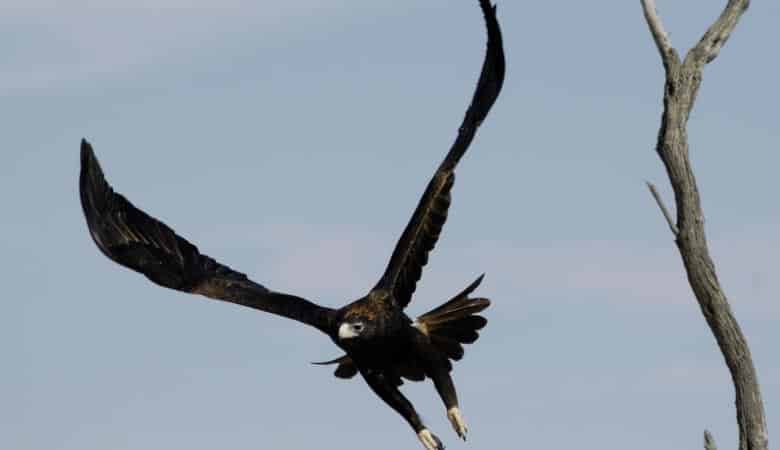
Average weight: 4 to 13 pounds
Having their unique wedge-shaped tails, the wedge-tailed eagle can be distinguished by this feature. Weighing anywhere from 4 to 13 pounds, this eagle is the largest bird of prey in Australia. It can also be found in New Guinea, Papua, and parts of Indonesia. This eagle is also a booted eagle and is one of the largest.
The English ornithologist John Latham was the first to describe this bird in 1801. During breeding season, this bird will also perform wild acrobatic flight patterns while in search of a mate.
7. Crowned Eagle (Stephanoaetus coronatus)
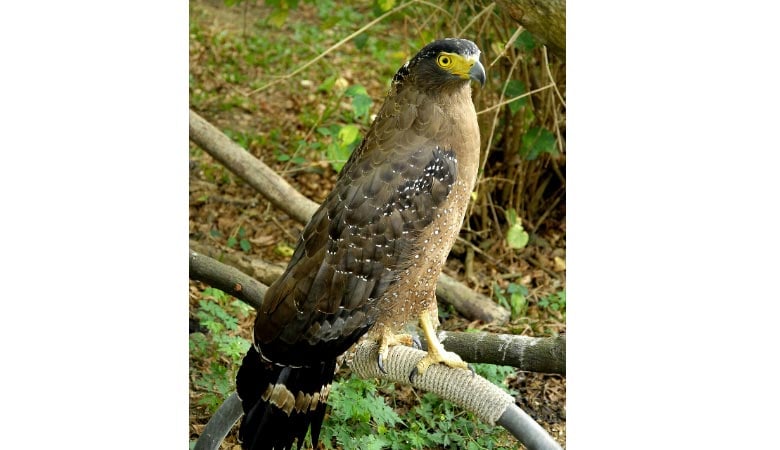
Average weight: 7 to 10 pounds
The Crowned Eagle is also known by the names African Crowned Eagle and the Crowned Hawk-Eagle. Having a distinguishable “crown” on its head, this species of eagle is easier to identify when spotted. This bird of prey has a diet that consists of almost entirely mammals. It will rarely take lizards or birds for sustenance. It prefers rodents, small mammals, and sometimes even smaller species of monkeys. It’s a bird that also resides in sub-Saharan Africa.
This bird weighs anywhere from 7 to 10 pounds. Carl Linnaeus also first described the Crowned Eagle in 1766.
8. Golden Eagle (Aquila chrysaetos)
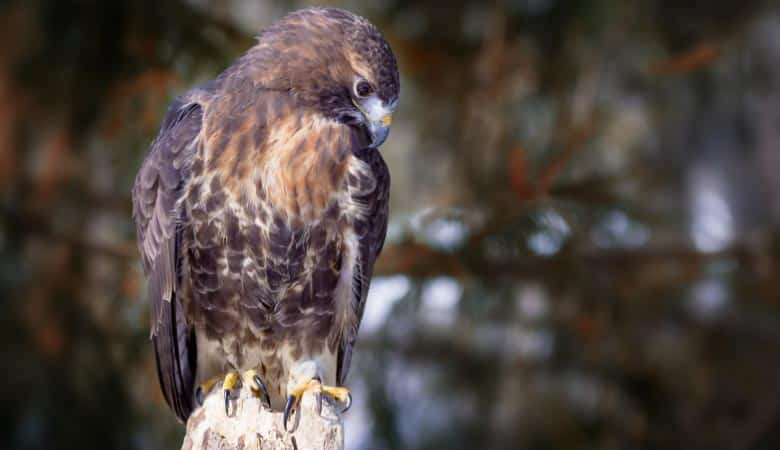
Average weight: 9 to 14 pounds
The Golden Eagle is one of the most well-known birds of prey that resides within the Northern Hemisphere of the planet. This eagle finds cliffs that are high up for nesting and will even return to the same nest for multiple years of breeding. Once a young Golden Eagle has matured, it will find its own territory to inhabit within a period of four to five years.
The Golden Eagle will weigh anywhere from 9 to 14 pounds. Linnaeus also first described this eagle and did so in the year 1758.
9. Bald Eagle (Haliaeetus leucocephalus)
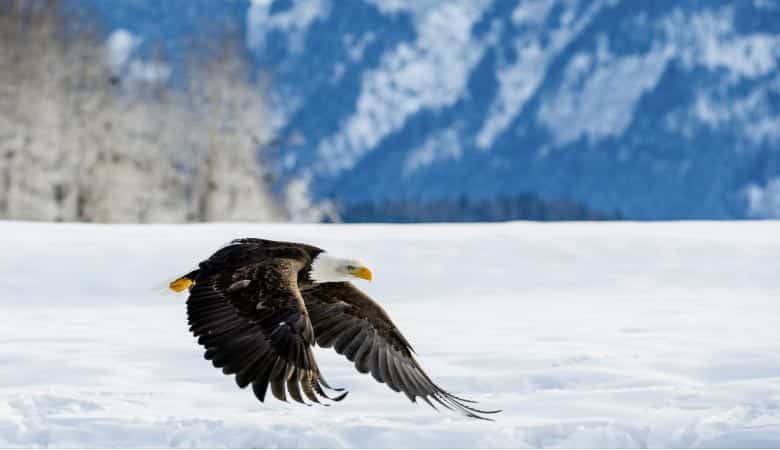
Average weight: 6 to 14 pounds
The Bald Eagle is the most well-known eagle (and perhaps even bird) in the United States. Being the country’s official bird, this majestic creature certainly ranks in as one of the biggest eagles there is. What’s even more baffling is the size of the nests they build. A Bald Eagle’s nest can be up to 13 feet deep and 9 feet wide, which is huge for a bird’s nest. And the nest itself can weigh up to a metric ton!
This eagle can weigh anywhere from 6 to 14 pounds, which is an impressive span. It’s also an opportunistic feeder, swooping down to the surface of bodies of water to catch fish for sustenance and is also considered a sea eagle.
10. Haast’s Eagle (Hieraaetus moorei)
Average weight: 20 to 26 pounds
Although Haast’s Eagle is an extinct species, it made our list because it is the largest eagle to ever exist. It lived in the South Island of New Zealand when it was alive, and its massive size is believed to be evolutionary due to the size of its prey. Julius von Haast first described this eagle (hence the name) in 1871 after discovery of remains. This eagle was believed to weigh 20 to 26 pounds when it was alive.

